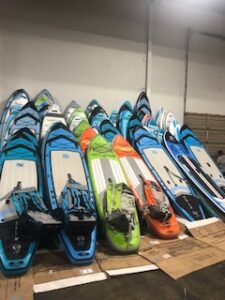One of our kitting projects is for Citibank.
This is the act of compiling multiple products into a single “kit” that is then shipped to your customer.
Please get in touch if you feel this service can benefit your order processing and logistics

By
in
3rd Party Logistics, Company, Cross Docking, Logistics, Press Releases, Uncategorized, Warehouse and Distribution
Posted
December 2, 2021 at 1:33 pm
One of our kitting projects is for Citibank.
This is the act of compiling multiple products into a single “kit” that is then shipped to your customer.
Please get in touch if you feel this service can benefit your order processing and logistics

By
in
3rd Party Logistics, Company, Cross Docking, Logistics, Press Releases, Uncategorized, Warehouse and Distribution
Posted
October 29, 2021 at 4:39 pm
By
in
3rd Party Logistics, Company, Cross Docking, Logistics, Press Releases, Uncategorized, Warehouse and Distribution
Posted
December 4, 2020 at 9:51 am
By
in
3rd Party Logistics, Company, Cross Docking, Logistics, Press Releases, Uncategorized, Warehouse and Distribution
Posted
December 4, 2020 at 9:47 am
Here is a picture from our paddle board account. We had to manually inflate all of the returned boards to determine if they could be sold as good inventory.


By
in
3rd Party Logistics, Company, Cross Docking, Logistics, Press Releases, Uncategorized, Warehouse and Distribution
Posted
May 1, 2019 at 5:19 pm
Although we continue to grow our business services and our client base, we don’t always get to chat about it. So below is a list of things happening right now within Laney & Duke:
Q: What are three questions a shipper should ask a potential 3PL vendor?
A: I think you should always ask a potential 3PL vendor what their contingency and disaster recovery strategies are. It’s important to get an understanding of the types of redundancies that are offered in the event of a supply chain interruption. Secondly, ask for an understanding of where you rank in customer size within the 3PL’s current customer base. Often, this will dictate the level of attention the provider is able to give. And lastly, but equally as important, you should always ask for an explanation of the 3PL’s company culture. At MD Logistics, we have found that a match of cultures between our customer and us is paramount. Choosing a provider who shares the same values and passion is critical to the long term success of the relationship.
Q: When should shippers be more concerned about value-added services and less driven by rates?
A: Value-added services become pertinent when looking at the total cost of a supply chain decision. For example, if your product originates in China and needs to be reworked to provide additional value, you can easily return the product back to the factory in China, but the value-add of partnering with a 3PL provider who can do the re-work here in the U.S. has the potential to pay dividends. This especially becomes apparent in the race to be the first to market. In this situation, the ability to get product to market, quickly, can far outweigh the logistics need to save costs.
Q: What regions or countries are under served in trade yet offer potentially big growth for exporters?
A: When I think about the regions that have the greatest potential for growth, immediately my first thought is greater China. Even with the advances that have been made in logistics and transportation in this region during the past 10-15 years, there is still a huge opportunity. Currently, only one-fifth of the population is in the greater economy and while great strides have been made to serve the remaining part of the population, it is still such a vast area that we have just begun to scratch the surface.
I also think there is a huge opportunity for exporters in Africa. The entire continent is starting to develop and invest in infrastructure, making expansion there more feasible.
Q: How is technology changing the scope of services 3PLs offer their clients?
A: As a third party logistics (3PL) provider, our job is to provide our customers with the solutions necessary to bring their products to market and, in the process, manage their customer experience. Mobile technology is changing the way in which we operate and now demands us to be quicker and more responsive. No longer is this an 8-5 industry, instead the introduction of e-commerce is transforming our operations and demanding around the clock transparency. It is now equally important to quickly fulfill orders, creating a positive experience for the end customer.
Where our service offerings used to be to only fulfill shipments, now technology allows us to choose the best transportation option to fulfill omnichannel orders, optimizing freight spend for our customers and ensuring the end customer receives their order in a timely manner. Information technology is also driving supply chain visibility from the point of origin all the way through to consumption. Internet of Things challenges us to have later cutoffs and lockouts because there is a greater emphasis placed on the ability to respond quicker to order fulfillment.